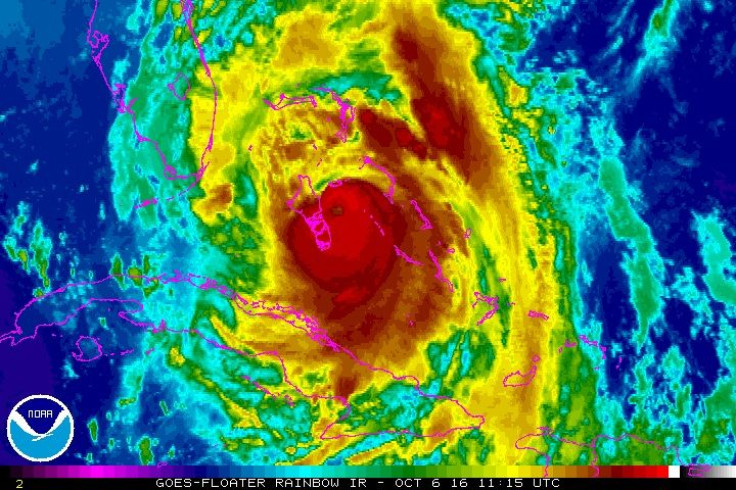How Wide Is Hurricane Matthew? Monster Storm Is Bigger Than The State Of Florida

More than 1.5 million Floridians were in Hurricane Matthew's path as it potentially barreled Thursday toward the U.S. southeast coast. Evacuations were ordered in Florida, Georgia and South Carolina after the massive storm pummeled Haiti and Cuba earlier this week, killing 25 people.
The storm was expected to strike Thursday night or early Friday morning between West Palm Beach and Cape Canaveral in Florida with winds of up to 145 mph. Florida Gov. Rick Scott said the impact would be "catastrophic."
"Do not surf. Do not go on the beach. This will kill you," he said at a press conference Thursday. "There is no reason not to leave."
So just how big is the monster storm? Hurricane Matthew is more than 600 miles wide and its eye alone is 15 miles wide. In comparison, Manhattan in New York City is 13.4 miles and 2.3 miles wide, while the state of Florida is is 500 miles long and 160 miles wide at its most distant points.
Water temperatures of at least 80 degrees Fahrenheit in the top 100 to 150 feet of the water column help build mega storms like Matthew, along with a mass of moist air, and low wind shear. Category Four storms are the second most powerful after Category Five hurricanes.
"Wind patterns in the upper atmosphere and the warm water in the tropical Atlantic should help maintain Matthew’s hurricane strength for the rest of the week,” NASA reported Wednesday
That doesn't mean coastal residents shouldn't take the storm, which threatens to bring high winds and massive amounts of rain to Florida, South Carolina and Georgia this week, any less seriously. Sandy, for example, wasn't even a tropical storm when it hit the East Coast of the United States nearly four years ago, but it still managed to rack up millions of dollars in damages and kill 285 people.
“It’s going to hit somebody," Chris Landsea, the National Hurricane Center’s Science and Operations Officer, told Popular Science earlier this week before the storm hit Cuba and Haiti Tuesday. "Once you get a hurricane in the Caribbean, there’s no way out. Hurricanes rarely dissipate over the open ocean, and in this particular case Jamaica and Haiti and Cuba are the first countries that are going to be impacted, pretty severely."
© Copyright IBTimes 2024. All rights reserved.












